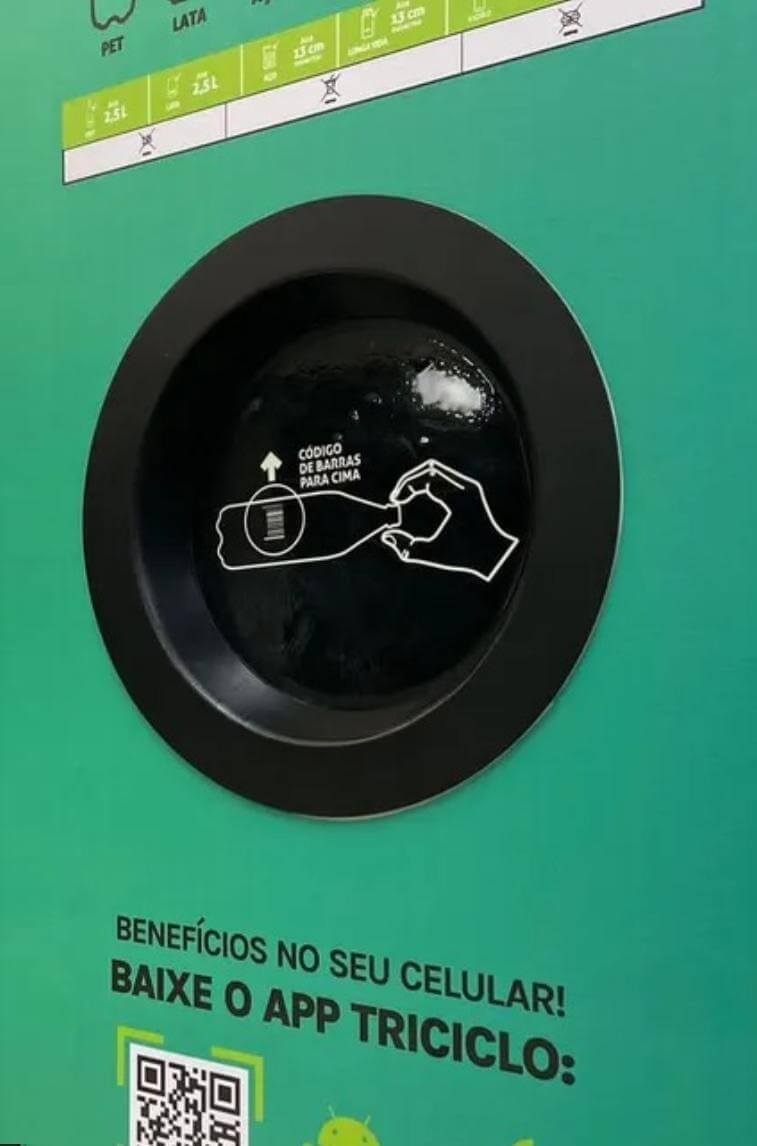O Estado de S.Paulo - 05/03/2023

By Writing Team
Posted in May 3, 2023

Carrefour, Ambipar, and other smaller companies have been using transparency, sustainability, and Web 3.0 technology to boost environmental actions.
Web 3.0, a concept that asserts that the next generation of the internet will be decentralized and less dependent on the structures of large technology companies, has enabled the expansion of various areas of the financial market. Now, the technology is being used to promote ESG, particularly actions aimed at protecting the environment.
According to experts interviewed by Estadão, Web 3.0 is already considered a trend in companies for environmental-focused projects. In addition to helping reduce greenhouse gas emissions resulting from car and airplane travel by reducing the need for travel, for example, Web 3.0 promotes experiences through virtual environments.
The explanation for the use lies in the inherent “nature” of the technology, which already enters the market with an environmental bias. “Web 3.0 is born sustainable, looking at the user and solving problems. It is born with a foot in ESG, and that is why it has been widely used [by large companies],” says Adriana Rodrigues, sustainability expert and founding partner of Go Digital Factory, which enables projects in various sectors in Web 3.0.
:quality(80)/cloudfront-us-east-1.images.arcpublishing.com/estadao/YAXD7VAN3BHSXFIU33NGGJGLGE.jpg)
For Ana Wadovski, also a partner at Go Digital Factory, this migration of sustainable projects to Web 3.0 seems like a natural movement for companies. “When we look at the ESG categories, blockchain already naturally aligns with these pillars. We have community-driven initiatives that encompass social and environmental aspects. The transparency of records, called the trust protocol, is directly linked to corporate governance. Web 3.0 facilitates the implementation of an effective ESG agenda.”
The trend can be seen in practice with the adoption of Web 3.0 by large companies in this market, such as Carrefour and Ambipar. “The biggest ESG projects come from large companies. With the arrival of Web 3.0, blockchain, and tokenization, they are expected to advance even further,” says Adriana, emphasizing that the participation of reputable companies in the market is important for the development of project creation.
Rodrigues also argues that even though some companies have taken individual actions, they are extremely important for the integration of Web 3.0 and ESG. “The companies that are undertaking these projects, even if they are in the testing phase, are already preparing for the inevitable. Blockchain is irreversible. If you’re not doing it now, you’re falling behind.”
Projects by large companies
Carrefour launched NFTs (non-fungible tokens) in support of bee protection in January this year: NFBEEs. They were launched in person at one of the hypermarket’s locations, allowing people without access to Web 3.0 and the metaverse to experience the new technology.
Charles Schweitzer, Director of Innovation at Carrefour Brazil, says the idea arose primarily from the importance of bees in the entire food chain, which is directly related to the company’s field of operation. “We wanted to look at something that was sustainable and not simply related to commerce,” he says.
:quality(80)/cloudfront-us-east-1.images.arcpublishing.com/estadao/S6LMNMUOFVHWRIRFAOV7ISXSLU.jpg)
In addition to enabling investment in an environmental project through technology, Schweitzer states that the process also involved the social aspect of ESG by seeking public opinion. “We purchased a large plot of land in SandBox and then held a contest in which all Carrefour employees worldwide could express their opinions about the cause we would support within Web 3.0.”
The official launch of the initiative took place in January this year at one of the physical stores of the supermarket chain. Currently, NFBEEs can still be accessed by everyone in the Carrefour SandBox.
The director emphasizes that besides investing in a cause that is directly related to the company’s values, the idea of the project was also motivated by the desire to position Carrefour in Web 3.0, anticipating the future expansion of the technology.
Like Carrefour, Ambipar, an open capital company focused on environmental solutions, has also embraced metaverse actions through the “Ambify” project, which enables traceability of carbon credits from their origin to their “retirement,” providing all the information about the path they have taken.
According to the Director of Digital Assets of the group, João Valente, the purpose of the project is to encourage the reduction of greenhouse gas emissions and contribute to emission offsetting. In this sense, the traceability provided by Web 3.0 has been the greatest driving force behind the implementation of the project in the metaverse.
“Web 3.0 technology was ideal for the project not only because it provides more transparency for the entire process but also because it facilitates auditing by independent companies,” says Valente, adding that other projects in this direction will be announced soon by the company, involving DeFi, NFTs, smart contracts, and the metaverse.
:quality(80)/cloudfront-us-east-1.images.arcpublishing.com/estadao/VCWJCM3S4VFFRDE4GXW3FTSACA.jpg)
According to Valente, the idea for Ambipar to venture into Web 3.0 is a natural evolutionary process, both due to the advancement of technologies and to position itself in response to the market’s desire for sustainable engagement. He highlights that just as people no longer talk about “dial-up internet,” in a few years, there should no longer be a dissociation between everyday internet use and version 3.0.
Benefits for companies
Ana Wadovski, an ESG expert, points out that the use of technology by large companies is a natural consequence of this new technology, considered ideal for the implementation of good ESG practices.
The main advantages include cost reduction and the possibility of launching “prototypes” of a product/service in Web 3.0 before its official launch. Moreover, large companies have the opportunity to test the receptivity of a product to the public, reducing the risk of building up large inventories.
“By creating a factory in the virtual universe, you reduce a significant number of processes, better adapt the facility, conduct tests, and only then invest in a physical launch,” says Wadovski, highlighting that there are also environmental gains. “We have a production chain [in the industry] that generates a lot of waste. A lot of trash. When we have technology proposals that are now linked to Web 3.0, we reduce consumption levels.”
Adriana Rodrigues, also a partner at Go Digital Factory, highlights two other factors that have made Web 3.0 a true trend among large companies: the increased productivity that technology generates in institutions and the transparencyBenefits that blockchain provides to projects. “The intrinsic governance that blockchain possesses allows companies to have a motivating factor. Asset tokenization, which is also taking its first steps, is much less bureaucratic, making it easier to carry out high-impact actions without so many bureaucratic processes,” explains Adriana.
In addition, the expert points out that Web 3.0, which differs from traditional internet precisely because of its resemblance to reality, also has the advantage of breaking geographical barriers.
Small businesses
:quality(80)/cloudfront-us-east-1.images.arcpublishing.com/estadao/EWOWICLZ5RIXNCTACMTJ3DECOM.jpg)
The trend of environmental actions on the blockchain extends not only to large conglomerates but also to startups and smaller companies. According to Adriana Rodrigues, an ESG and Web 3.0 expert, although major market players are now adopting the technology, small groups have been using it for years.
“Small companies, especially those connected to technology, had already paved the way. The large companies are now looking at this path and saying, ‘okay, I understand. This path works, and I will adopt it.’ That’s why we’re seeing this movement from market giants now,” explains Adriana Rodrigues, an ESG expert.
MetAmazônia, for example, allows anyone from around the world to visit the region through the metaverse. “We bring anyone closer to the region, eliminating distance barriers,” says Ana Leme, the company’s global community leader.
:quality(80)/cloudfront-us-east-1.images.arcpublishing.com/estadao/DY42SEQMBRBBVP5IQWSVY3EUY4.jpeg)
Although the focus of the visit is to allow people to explore the intricacies of the Amazon, the company emphasizes that one of the motivations for embracing Web 3.0 is the understanding that it is possible to profit sustainably. Therefore, the proposal for customers is not only to support an environmental cause but also to see the tokens of MetAmazônia as an investment.
Onça Cripto is another noteworthy initiative among small companies. Created in 2021, the project’s existence was prompted by the wildfires in the Pantanal that occurred that year, leaving several jaguars with severe burns.
“We saw the fires happening, there was smoke in the city all the time. We saw how many animals were dying, and that gave me a feeling of helplessness,” says innovation consultant and creator of Onça Crypto, Kaike Closs.
After that episode, Closs decided to specialize in ESG and learn more about Web 3.0 to make his project viable. Today, people who want to support the preservation of wildlife have the opportunity to purchase an NFT.
:quality(80)/cloudfront-us-east-1.images.arcpublishing.com/estadao/VHVKEPGCXRGDPLLZVIIU374SO4.jpeg)
From the funds raised by the institution, which has a negative carbon footprint and has immediately offset 100 tons of carbon, 50% is donated to the NEX Institute. For every four NFTs sold, Onça Cripto plants a tree.
Another institution that has also embraced Web 3.0 to implement environmental actions is Kanna Coin, a decentralized environmental impact company that combines blockchain technology with the hemp market through the sale of the KNN cryptocurrency.
The company uses blockchain and hemp as a means to finance environmental damage compensation actions, creating a digital asset that represents a fraction of land revitalized by the plant. The great advantage of using this particular plant is its ability to absorb more CO2 per hectare than other plant species.
Moreover, the CEO of Kanna Coin, Luis Quintanilha, states that the hemp fibers can still be used in paper production, eliminating the need to cut down trees. For him, entering Web 3.0 with the business was a way to bring credibility to the work done by the institution.
“There is a cultural taboo around hemp, mainly because a significant part of its trade comes from drug trafficking. Blockchain, the most powerful governance tool we have, with immutable records, can map and register it transparently for everyone,” says Quintanilha, highlighting that for Kanna Coin, as well as for other startups, the transparency of Web 3.0 was the main motivation to create the company in this universe.
